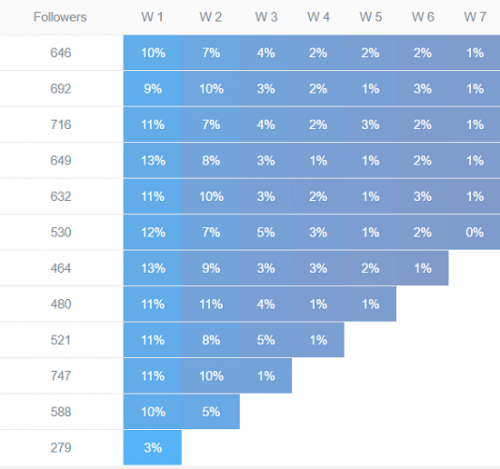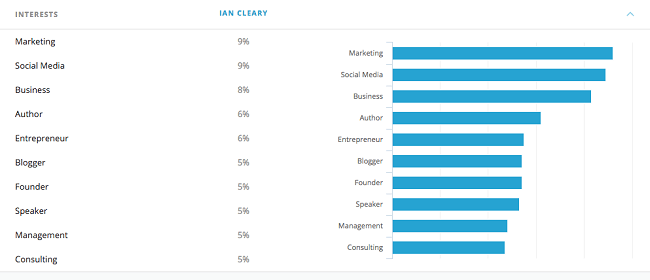
What is your strategy for figuring out if Twitter is really useful for you?
Years ago, I used to run software development teams and I remember developers using Twitter: I couldn’t see the point of it. Why are these developers sending 140-character trivial messages to each other every minute of the day?
It will never catch on, I thought. It’s a geek thing!!
Well, I was wrong. I started using Twitter because so many other people were on the site, and I hated it at first. I hated it because I was tweeting without a purpose. And if you’re tweeting without purpose, you should hate it, because it’s just a waste of your time. Give it up, if there’s no purpose to your tweets!
But what if you had a real strategy for using Twitter and you could measure if this strategy was working? And what if this strategy resulted in you growing your business?
For this to happen, measurement is extremely important.
The following pointers will give you some ideas of whether your Twitter strategy is working for you.
1. Is it Driving Relevant Traffic Back to Your Website?
You share lots of great content and some of this content includes links back to your own website. But what happens to the traffic that comes from Twitter? Do people hang around for a while or disappear immediately? Do they engage with your content? Do they sign up to your email list?
The best way of measuring this is to set up a goal within Google Analytics. For example, if the main goal of your website is to build email subscribers, then you could set up a goal that measures this, e.g. the goal is achieved when someone reaches your thank-you page after they sign up.

Now you can start looking at what traffic came from Twitter and what your conversion rates were as a result of this traffic. You can also compare these conversion rates with the conversions from traffic that comes from other social channels to see which are the most effective channels for conversions.
In the example below, the conversion rate is twice as much on LinkedIn as it is on Twitter. So, you may want to spend more time on LinkedIn, or instead, you could start to analyze your followers on Twitter to see if they are really relevant.

2. Is Your Follower Count Growing?
It’s certainly not all about the number of followers. But if you are sharing good content, you should be attracting and growing an audience that’s relevant to your business.
You should also have a high level of retention of existing followers. So, it’s worth having a look at the graph to see if your Twitter follower count is growing or dropping.
Audiense is a great tool that you can use to analyze your churn rate. This is the number of people who follow you and then unfollow soon afterward. If you have a high churn rate, it becomes difficult to grow your following.
A high churn rate also indicates that your content is not interesting to your new followers. Are you following the wrong people? Are you sharing the wrong content? Are you sharing too much content?
Here’s an example of churn rates displayed using the Audiense tool. On the left, it shows the new followers, and then each column shows the percentage of these followers that unfollowed you after each week. You’ll see that the biggest drop happens within the first couple of weeks.

There’s one more reason for high churn. If new people follow you and you don’t follow them back, they may unfollow you. So, it’s important to check your new followers on a regular basis and follow back the people who are relevant to you.
3. Are the Right Type of Followers Following You?
When was the last time you analyzed your followers to see the overall breakdown of their profile?
Why build up followers who are not relevant? It’s easy to have a couple of hundred thousand followers, but a lot more difficult to build up a targeted list of relevant followers.
Klear is a social media monitoring and influencer marketing platform that can help deliver some very useful insights into your audience. If you want to know if the interests of your followers align with the content you share, this tool will help by sorting them into one of the 60,000 interest categories.
From the analysis of my profile below, the majority of followers are relevant.

4. Are Your Followers Sharing Your Content?
Audiense’s Tweet Analytics feature also displays your engagement stats in a chart, but what’s great about it is that it also shows the Amplification rate (the number of retweets/tweet), Conversation rate (the number of mentions/tweet), and Applause rate (the number of likes/tweet).
Amplification is important because it gives you exposure to new audiences as your followers are sharing your content to their followers. Now you can dive in deeper and start analyzing your most popular/least popular content.
Also, have a look at the content you share: is it all links, text updates or images? Which works best with your audience?
Another useful tool to check out is Twitonomy which provides some good, detailed stats. An article from Social Media Examiner on how to boost Twitter conversations is also worth checking out.
Summary
Every so often, it’s really useful to step back and analyze your Twitter account to see if your Twitter strategy is working or not. If you don’t have a strategy yet, maybe it’s time you create one! Or maybe you a strategy, but by doing some analysis, you’ll certainly be able to make improvements.
Is your Twitter strategy working? We’d love to hear from you!
Related Posts
How to Use Audiense to Analyze and Grow Your Twitter Presence




